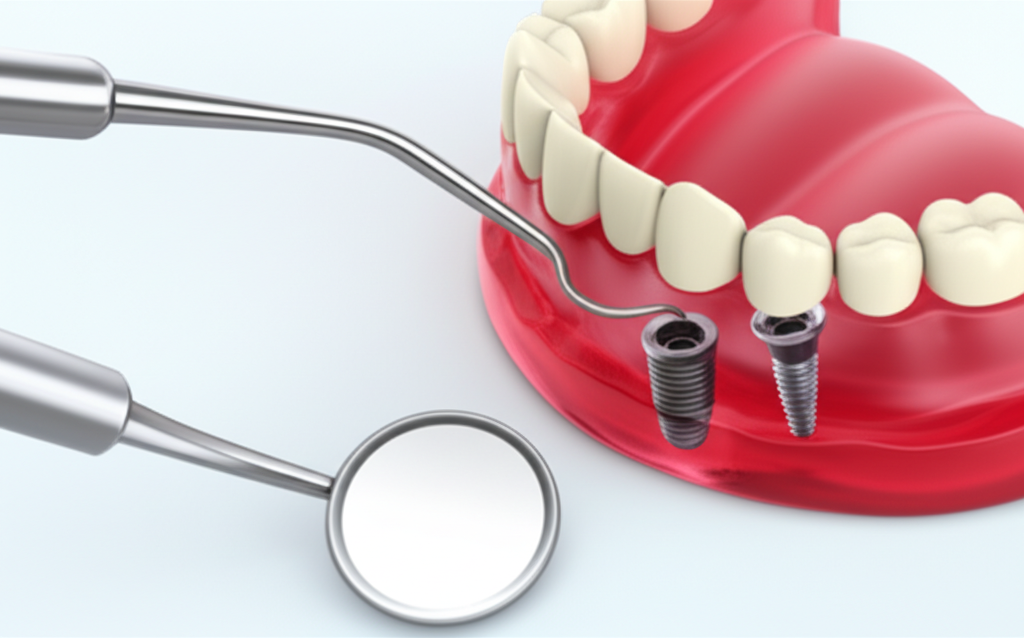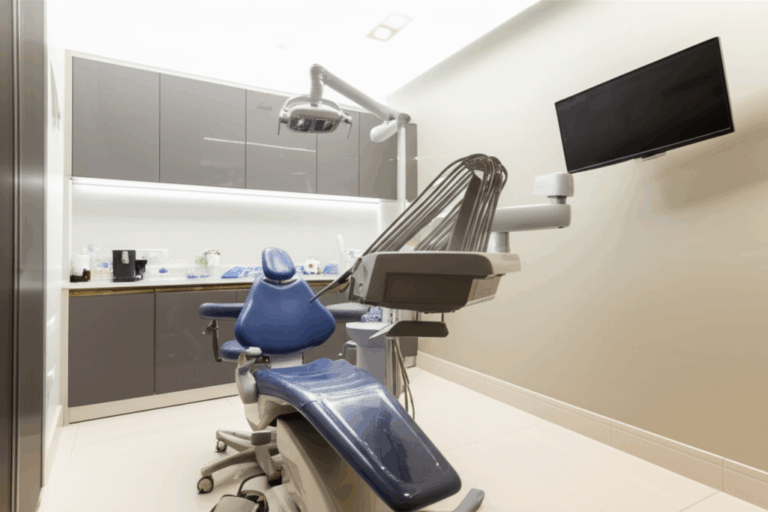
What Are The Parts of a Dental Implant? A Quick Overview
I’ll always remember the day my dentist told me I needed a dental implant. My head was spinning with questions. What is an implant? How many pieces are used? Is it going to look and feel like a regular tooth? Over the next weeks, I spent a lot of time learning about dental implants—how they work, what they’re made of, and how everything fits together. Now, I want to share what I found out, breaking down the parts of a dental implant in simple terms, so you can feel comfortable and ready if you’re thinking about getting one, or just want to know how these cool things work.
Let’s get right to it. A dental implant isn’t just one thing stuck in your jaw—it’s more like a little set, with different parts that fit together. When my dentist first showed me, I got it right away. Most of the time, a dental implant has three main parts:
- The Implant Fixture: Sometimes called the “implant post” or “fake tooth root,” this is what gets put in your bone.
- The Abutment: This bit joins the implant fixture to the top part you use and see.
- The Dental Crown: The part that looks like a tooth above your gumline.
There are a couple of helper parts you usually won’t see, but I’ll talk about those soon. For now, let’s take a look at each main part, based on what I learned and went through myself.
Table of Contents
The Implant Fixture (The Root Replacement)
What Is the Implant Fixture?
When I first heard “fixture,” I thought of pipes under a sink. But in dental talk, the implant fixture is a tiny, screw-looking post—it acts like the base for your new tooth. The dentist puts this straight into your jawbone. It’s what gives your new tooth its strength, like the root does for a natural tooth.
Implant Fixture Materials
One thing that shocked me was how modern these materials are. Most implants today are made from medical-grade titanium. Why? Because bone and titanium get along really well—your body sees it as safe, which is pretty rare for metal. This lets the bone join tightly to the implant, holding it in place. Some people choose other options like zirconia (which is a special ceramic), mostly if they can’t have metal.
How The Fixture Works in Your Mouth
To give an everyday example: If you want to hang a heavy shelf, you don’t just screw it into the wall—you put it in a stud so it stays up. It’s the same with an implant fixture. Once it’s put into your jawbone, over the next few months, your bone grows right around it and keeps it solid for many years (sometimes even forever if you care for it).
Key Features That Matter
Implant fixtures aren’t all the same. When I was looking into mine, here’s what the dentist paid attention to:
- Design and Threads: The way the threads look helps hold onto the bone right away.
- Sizes/Shapes: Everyone’s jawbone is a bit different, so implants come in lots of lengths and widths.
- Surface Treatments: Some implants are roughened (like being sandblasted) to help the bone stick and grow onto them better.
My surgeon let me see samples of normal and mini-sized implants, depending on how thick my bone was and where I needed a tooth. Having options really helped.
The Abutment: The Connector Piece
What Is an Abutment?
I always thought a dental implant was just one chunk of metal, but then I learned about the abutment—it’s a little connector that’s actually really important. Like a bridge, the abutment is the pillar that links the base in the water (implant fixture) to the part you drive across (the dental crown).
Materials Used in Abutments
Most abutments are made from strong, safe metals like titanium or gold alloys. For front teeth, some dentists use tooth-colored zirconia abutments. They’re not as easy to see under thin gums, which can make your smile look better—a big deal for me.
Functions of the Abutment
The abutment is kind of the “quiet worker” in the whole setup. Here’s what it does:
- Joins the Base to the Crown: It literally “screws in” to the fixture, and the crown goes on top.
- Handles Biting Pressure: When you bite food, the pressure goes through the abutment, then down into the implant and your bone.
- Shapes Your Gum: A good abutment can help your gum heal in just the right shape, so everything blends in.
Types and Variations of Abutments
During my planning, I found out there were different types:
- Stock Abutments: Pre-made in standard shapes and sizes; cheaper and good for simple cases.
- Custom Abutments: Made to fit just for you by a dental lab. These can fit better and look more natural.
- Angled Abutments: If an implant isn’t put in straight (because of tricky spots), angled abutments help the crown sit right.
- Multi-Unit Abutments: Used for bigger fixes, like if you’re getting several teeth or a whole new set.
Ways the Abutment Attaches
This part confused me at first, but it’s actually pretty simple:
- Screw-Retained: The abutment and/or crown are held in with a screw. Easier to take out if needed, though you might see a tiny spot on top (which they cover over).
- Cement-Retained: The abutment is glued to the fixture, then the crown is glued on. Everything stays hidden but can be hard to take out if anything goes wrong.
My dentist talked me through these. For me, screw-retained was easier for checkups.
The Dental Crown: The Visible Tooth Replacement
What Exactly Is a Dental Implant Crown?
This is the part everyone sees when you smile. It sits on top of your abutment and looks and works like a real tooth. If you’ve had a normal crown before, it’s a lot like that, except what’s underneath is different.
Common Crown Materials
Crowns can be made in a few ways, and each has its ups and downs:
- Porcelain Fused to Metal (PFM): Metal inside, tooth-colored porcelain outside. Strong and looks good, but sometimes shows a metal line at the gum after a while.
- All-Ceramic Crowns (Zirconia, Emax): Zirconia is extra tough and white, and Emax gives a bit more shine. These are great for matching natural front teeth.
- Gold: Sometimes used on back teeth. Really tough but stands out.
My dentist sent my 3D scans and color info to a digital dental lab so the crown would fit well and match my other teeth.
The Purpose of the Dental Crown
Crowns aren’t just for looks. They’re for:
- Chewing: A strong crown lets you eat anything again.
- Looks: A nice-looking crown doesn’t stand out.
- Support: A crown helps keep your other teeth from moving around.
For me, when I saw my new crown, I couldn’t tell it apart from my other teeth—and my confidence shot up.
Other Important Components: The Hidden Helpers
Some parts of the implant system do their work in the background. You won’t see them, but they really matter for healing and making sure everything works long-term.
Healing Cap or Gingival Former
After my fixture was put in, the dentist screwed on a healing cap—a small cover that protects the implant and helps the gums heal shaped right. When everything healed, it was just unscrewed to make room for the next step.
Abutment Screw and Prosthetic Screw
- Abutment Screw: Holds your abutment onto the fixture. If it gets loose, you’ll feel a wiggle!
- Prosthetic Screw: If the crown is screw-retained, this screw holds it in place. It makes it easier for the dentist to fix if needed.
Impression Coping
Before getting my final crown, my dentist put on an “impression coping.” It’s a tiny piece that helps make an exact copy of where my implant sits in my mouth. The dental lab uses this mold to make sure the crown and abutment will fit just right.
Putting It All Together: How the Pieces of a Dental Implant Work in Harmony
Here’s how things happened for me:
- Plan and Prep: First, the dentist made scans and models. If my jaw needed a boost, they talked about bone grafts.
- Fixture (Implant Post) Put In: The dentist placed the titanium or zirconia post right where my old tooth was. Healing takes months so the bone can grip the implant.
- Healing Cap Added: This filled the spot and kept the implant safe as my gum grew around it.
- Abutment Put In: When things were healed, they took out the healing cap and put in the abutment.
- Impressions and Crowns: Scans and molds went to a lab, where they made a crown to match my other teeth.
- Crown Attached: Last part—the new tooth is screwed or glued to finish my smile.
When all three major parts—the fixture, abutment, and crown—come together, it’s like a team: strong, natural, and working nicely.
Success, Longevity, and Common Complications
One of the first things I wondered was, “How long will this last?” Here’s what I found:
- Implant Fixture: Usually, these work 95-98% of the time after 10 years, and only drop a bit after 20 years—which is really good. If you clean them well, the post can last 30 years or even longer.
- Abutment: Most last 10 to 15 years. Sometimes screws might get a bit loose, but a dentist can tighten them up.
- Dental Crown: Crowns often last 5 to 15 years. I learned to skip sticky candies, and I try not to grind my teeth.
Some problems do happen:
- Peri-implantitis: This is swelling around the implant from not keeping things clean or other health stuff. About 10-20% of people might get this after 10 years.
- Screw Gets Loose or Breaks: About 2-10% of implants have this, especially if you bite really hard or if it’s not put in right from the start.
- Material Choice: Titanium is still the strongest. Zirconia looks nice but might break a bit easier if used for the base.
I really learned that the little things matter—like the skills of the dentist, the stuff they use, and the work done at the dental lab.
What I Learned About Choosing the Right Lab and Components
My dentist told me to pay attention to this: Every implant depends on a whole team. From the surgeon to the implant dental laboratory making custom parts and the lab doing the crowns—each step is important.
I made sure to ask about digital design. Labs that use computer technology can scan and build implant parts just right. For a good-looking, tough result, how your crown is made is just as important as who puts it in.
I also found out that a top china dental lab can make implant parts as good as local ones, if you make sure they’re certified and do good work.
Frequently Asked Questions
1. What if I’m missing more than one tooth?
Implant fixtures can hold bridges, full sets, or even special dentures. Abutments still link things together, but sometimes special “multi-unit” abutments are used for more teeth.
2. Can the crown break or come loose?
Yes, but it’s not too common if the right stuff and good techniques are used. Crowns made from zirconia or Emax are tough, and any wiggly screws are usually easy to fix in the dentist’s office.
3. How do I care for my implant?
Brush and floss like you would real teeth, maybe use some special little brushes, and make sure to go to your checkups.
4. Is there a one-piece implant that skips the abutment?
Some types have the abutment and post as one. But for most people, using three main pieces works best.
Conclusion: Why Understanding Implant Parts Matters
Looking back, knowing more about each part of my dental implant made the whole thing feel a lot less scary—and a lot more interesting. Understanding what the implant base, abutment, and crown each do, plus how the hidden parts fit in, helped me make better choices. It’s kind of like knowing all the stuff that goes into your favorite recipe—you end up enjoying the result even more.
If you’re thinking about getting a dental implant, here’s my tip: Ask lots of questions, find out what will happen, and ask for quality at every step—from the dentist to the implant dental laboratory helping out behind the scenes. A solid, good-looking, long-lasting smile is built from each little part working together.
And now, when someone asks about my new tooth, I can tell them how all the pieces work—and maybe get them excited to start their own journey to a better smile.








